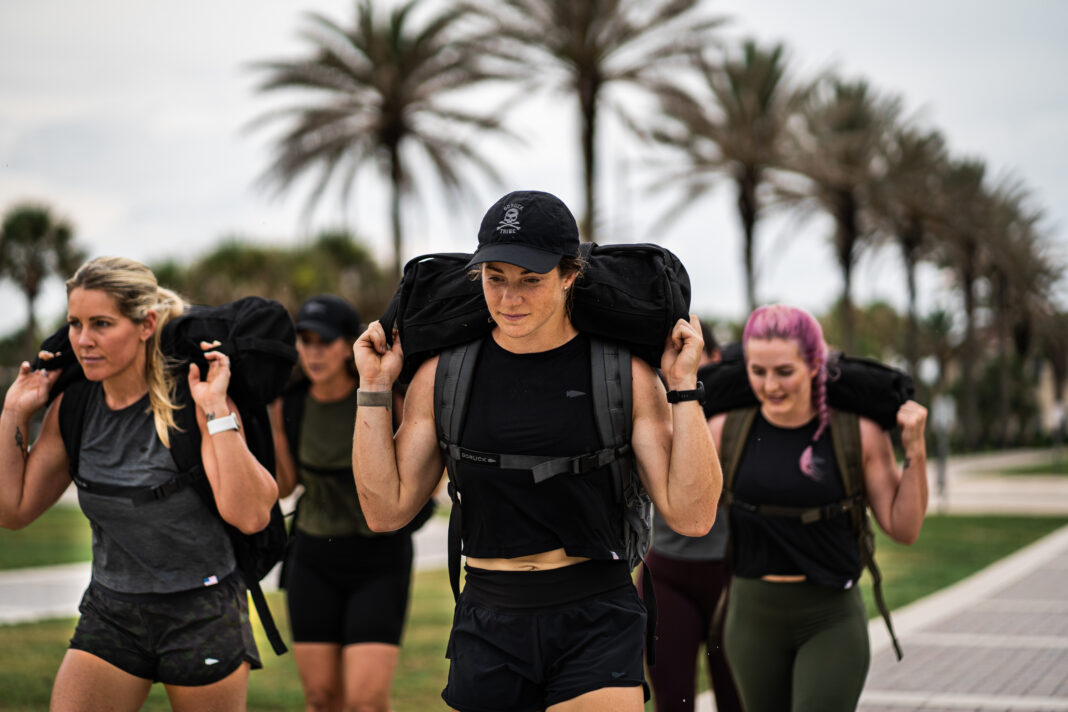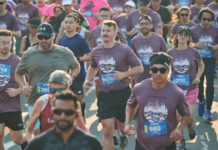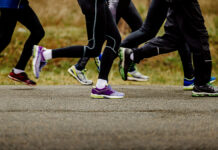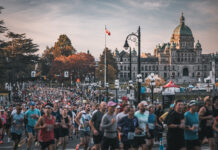On a bluebird day last fall, a dozen people met in a Regina park. Their goal for the day: to carry heavy objects. For six hours they traded loads: logs for sandbags; weighted backpacks for Norse- inspired hammers, and travelled between parks, stopping only to perform more bodyweight plyometrics.
The group was doing their own elevated rucking challenge, dreamt up by coach Riley Nadoroznick of Conviction Fitness.
He was introduced to rucking nearly 10 years ago while looking for better ways to train for the Spartan Race World Championships.
“Rucking is a really good way to train the aerobic system, train endurance without that beat down of running,” he says.
On race day, he felt prepared; fresh. These days, Nadoroznick is training others in the community, and one of his favourite activities is rucking.
From carrying a heavy book bag between classes to loading up a backpack for a night in the backcountry, it’s likely you’ve already tried rucking. Its definition is to move with a weighted backpack.
Simply put, rucking is walking under load, and it’s considered by some of fitness’ leading thinkers to be fantastic for both fitness and health.
When it comes to building an aerobic base, there’s no comparison to rucking.
“It’s a stimulus that allows you to get a ton of that zone 2 work (60-70 per cent of maximum heart rate) in that’s interesting, that challenges your tissues in different ways,” says Kelly Starrett, author of the Supple Leopard, and founder of The Ready State.
Rucking works the aerobic system, while also taxing the musculoskeletal system, which means that not only will it get your heart pumping, but you will also see benefits more commonly associated with lifting weights, without stepping foot in the gym.
Rucking has its roots in the military. For centuries, soldiers have been carrying heavy loads on their way to, and even in battle. Today, weighted marches remain part of their training.
But rucking has surpassed its military origins, piquing the interests of the likes of Starrett, Peter Attia, Michael Easter, even Whole30 founder Melissa Urban.
And many of them discovered the activity through GORUCK, a company that makes specialized rucking gear.
Last year, during the Sandlot fitness festival, GORUCK’s founder, Jason McCarthy, was joined by Starrett, Urban, army veteran Richard Rice, and author Easter, during a rucking deep-dive panel.
“The biggest mistake I see is people not doing it,” McCarthy said of rucking. “This is a great way for anybody on planet earth to be more active and to get stronger and feel better.”

Science supports his thinking. In a 2019 study, a group of 15 men took part in a 10-week rucking program. According to the study authors, at the end of the program, participants all experienced better physical performance.
But what about injuries? It turns out that rucking is easier on our joints than running. Easter describes a study out of the University of Pittsburgh, where researchers tracked 451 soldiers for a year. Out of their 28 injuries, 18 were from running, seven from weightlifting and just three from rucking.
And when we think about building fitness for life: “There’s nothing more useful than being able to handle a load for multiple hours,” says Starrett.
The pros are also using rucking in their training. For CrossFit Games athlete Emily Rolfe, rucking increases the load of her workouts, making those movements easier when she isn’t wearing her rucksack, or a weighted vest.
Rolfe runs and does movements like rope-climbs, muscle-ups and pull-ups wearing a weighted pack. She notes that some workouts at competitions require athletes to perform skills with weight on them, such as a pack, a vest, a sandbag, so training this ability becomes important.
“Like anything, if you make something harder, when you try the easier version, you can do it better,” she says. “Even if I practice a movement with a ruck bag and it doesn’t show up [in competition] it still gets me stronger and anything body-weight afterwards is much easier.”
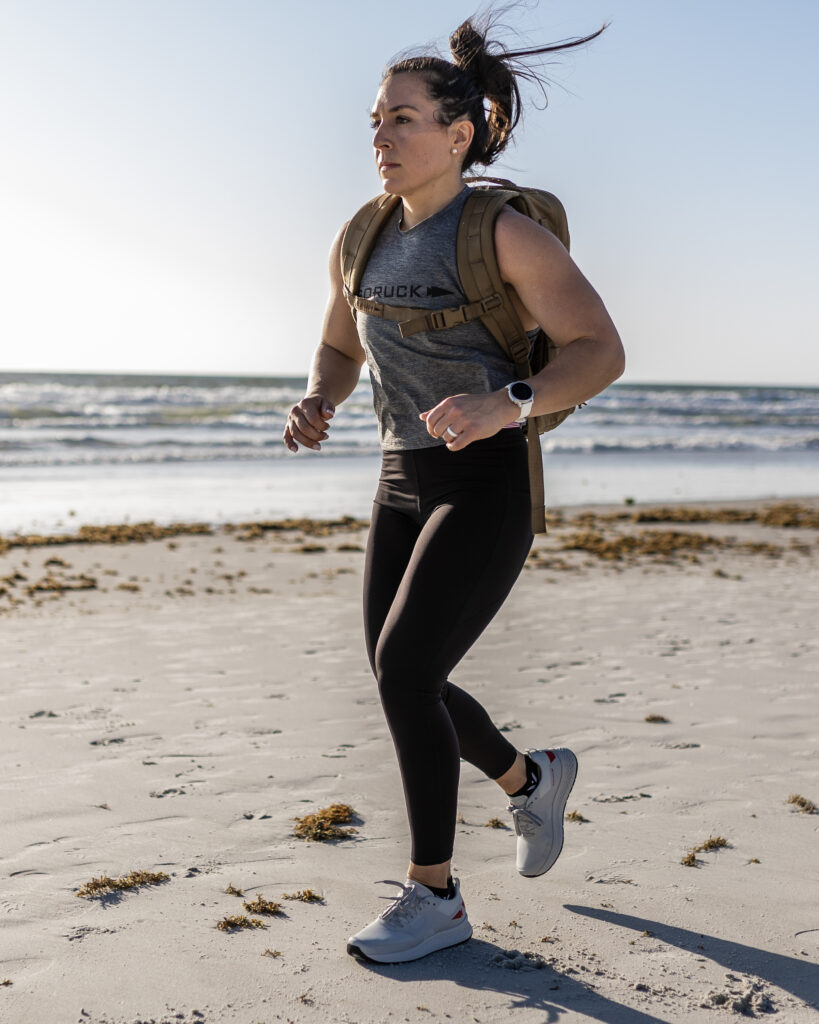
Take the five-kilometre cross-country run at this year’s CrossFit Games. Rolfe came in first at a scorching 17:48.62, more than a full minute faster than second place, as well as half the men’s field.
That’s not to say everyone should be running with weight on their backs. Most are better off walking under load, even before they run, says Starrett.
This is because running is a difficult movement to master.
“What we tell people oftentimes is you need to go run to get fit,” says Starrett in a video clip from The Ready State, “and we’re like, hang on. Why don’t you just walk around your neighbourhood and then let’s get a little load on you before we talk about introducing this very complex running skill.”
Rucking is also a social activity.
Nadoroznick’s group in Regina is able to stay together during rucks and still get in solid workouts because they are carrying different weights. It will also make you tougher. Nadoroznick says some of the group’s favourite times to ruck is when the weather isn’t perfect, and the world hasn’t fully woken up.
If there’s one thing in common between all ruckers, it’s the feeling of relief when you finally take that weight off.
“Everything just feels awesome,” says Nadoroznick. “You’re calm. You know you’ve worked hard. Take the weight off and you just feel like you’re flying.”
HOW TO START RUCKING
Get geared up
You don’t need any fancy gear to start rucking. A solid pair of shoes (blisters can derail the best-laid training plans) and a backpack are all you need to get started.
Wrap up any weights (textbooks, dumbbells, kettlebells) in a padded material like a towel or a blanket. If you want to invest in rucking-specific gear, Rucking Canada and GORUCK have a variety of options.
Start low
Don’t go crazy with weight on your first rucks. Nadoroznick says you want the weight to feel light when you first put the pack on.
Start with 10 – 20 lbs for your first ruck.
Find your tribe
Rucking works your mind as much as it does your body. It’s a game of mental toughness. Find others to go with. There are clubs all over the country that offer group ruck meet-ups, just like Conviction Fitness in Regina.
Photography by GoRuck
You may also like: Discover the World by Foot with Fastpacking
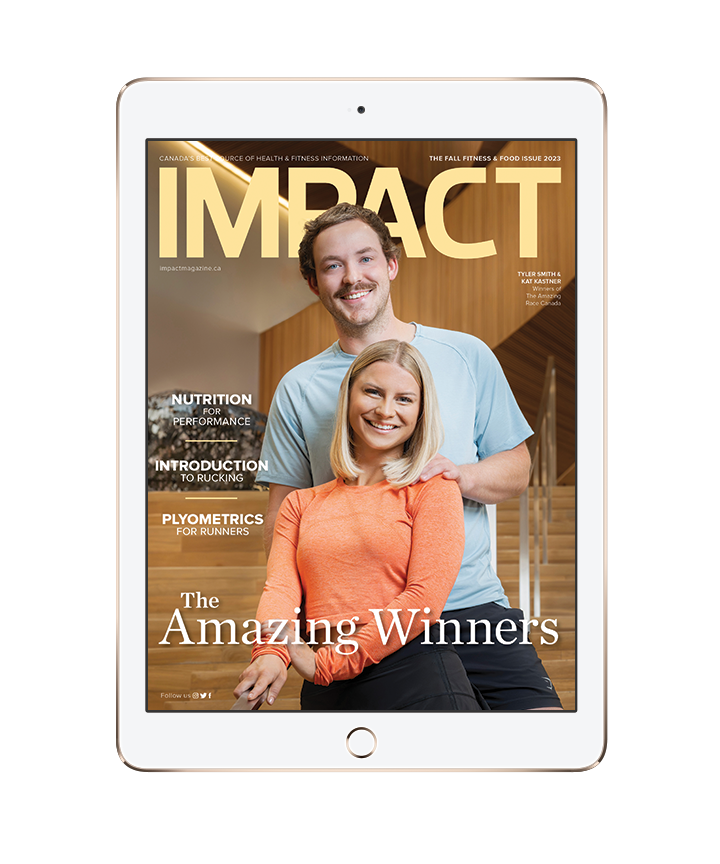
Read This Story in Our 2023 Fall Fitness & Food Issue
Featuring this year’s winners of the Amazing Race Canada, Ty Smith and Kat Kastner on our cover. Inside our latest issue, you’ll find all the inspiration you need to carry you through the autumn season. From delicious high-protein recipes and how to resist the crunch of potato chips to running through the high peaks of the Colorado Rockies and the latest in nutrition and fitness, these pages are packed with expert knowledge and advice.

